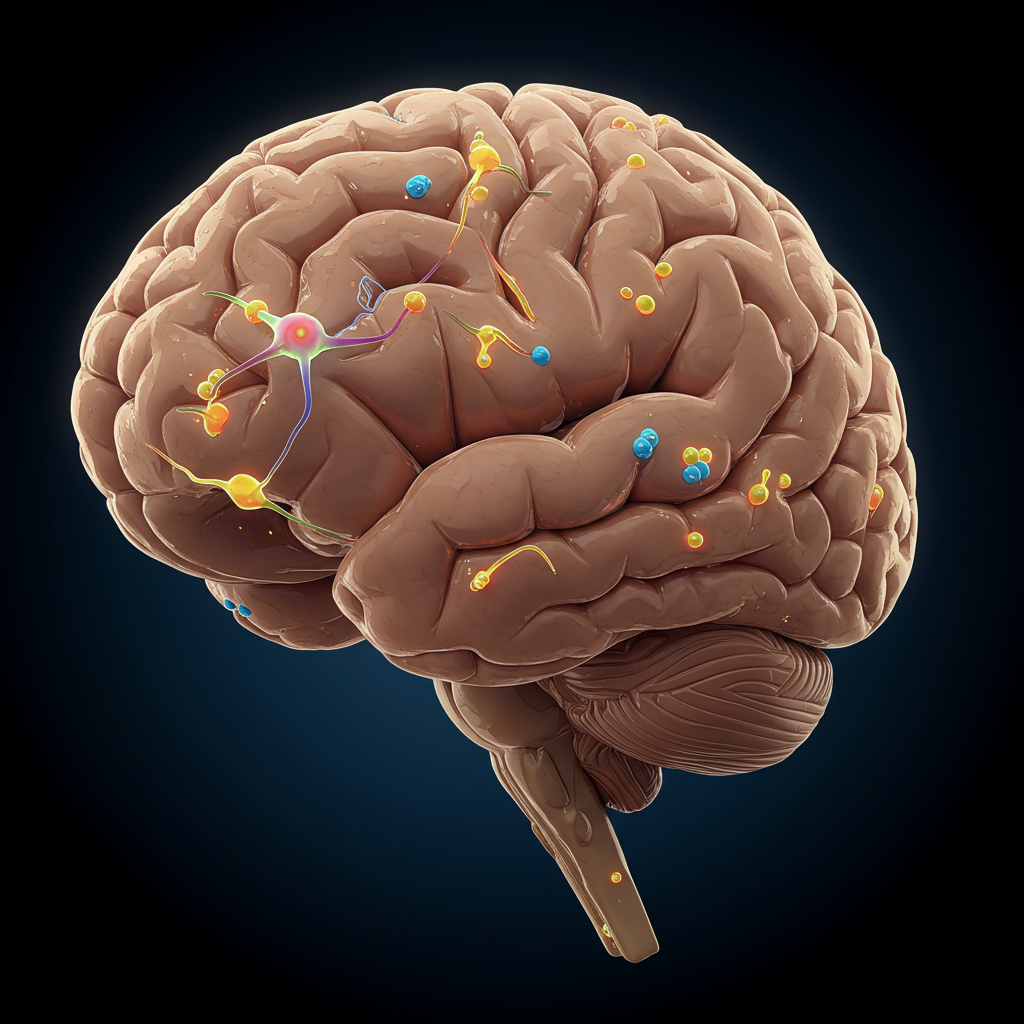For decades, one question has fueled intense debate among neuroscientists: Can the adult human brain create new neurons? It was long believed that after a certain age, we were born with all the brain cells we’d ever have. But a landmark new study may finally put this persistent controversy to rest, offering compelling evidence that our brains retain a remarkable capacity for growth throughout life.
This isn’t just an academic argument; understanding whether and how adults generate new brain cells, a process called neurogenesis, has profound implications. It could reshape our understanding of learning, memory, mood, and even how we approach treating neurological diseases like Alzheimer’s or repairing brain injuries. The findings suggest a level of brain plasticity and regenerative potential previously underestimated in adults.
Decades of Doubt: Why Was This a Question?
The concept of neurogenesis – the birth of new neurons – was well-established in developing brains. However, applying this idea to adults, particularly adult humans, proved challenging and controversial. While animal studies in mice, rats, and some primates since the 1960s showed ongoing neurogenesis in specific brain regions, definitively proving it in humans was difficult.
Human brain tissue samples are hard to acquire quickly and handle consistently. Factors like the time between death and tissue preservation, the chemicals used, and how samples are sliced can all make it incredibly difficult to identify delicate, newly forming cells. Past studies attempting to find evidence in adult human brains yielded conflicting results, leading to the scientific stalemate.
The Breakthrough Study: Strong Evidence Emerges
A recent study published in the journal Science leveraged cutting-edge technologies to overcome previous limitations. Researchers analyzed hundreds of thousands of individual brain cells from human tissue samples ranging in age from newborns to seniors. Their findings provide robust evidence supporting the ongoing generation of new neurons in the adult human brain.
This new research offers some of the strongest data yet to support the idea that our brains aren’t static after childhood. The adult brain, specifically a key area vital for memory and emotions, appears to continue producing new neural building blocks.
Where the Magic Happens: The Hippocampus Connection
The study focused on the hippocampus, a small, seahorse-shaped structure deep within the brain. The hippocampus is well-known for its crucial roles in forming new memories, learning, and regulating emotions. In animals, adult neurogenesis is consistently observed in the dentate gyrus, a specific part of the hippocampus. This new human study found evidence of the same process occurring in the adult dentate gyrus.
Marta Paterlini, a co-lead author on the study from the Karolinska Institute in Stockholm, stated that their work effectively settles the long-running debate. According to her, the evidence is clear: adult human brains are capable of growing new neurons.
How Scientists Finally Found the Proof
The research team employed a sophisticated combination of techniques previously unavailable or not widely applied to human brain tissue studies:
Single-Nucleus RNA Sequencing: This allowed scientists to look at the RNA within individual cell nuclei. RNA acts as a messenger molecule, reflecting which genes are actively “switched on” in a cell. By analyzing RNA, researchers could identify cells with gene activity patterns characteristic of neural stem cells and developing neurons at different stages.
Machine Learning: Artificial intelligence algorithms were used to process the massive amounts of data generated by RNA sequencing. The machine learning helped identify and sort different cell types and patterns within the samples, essentially finding “needles in a haystack.”
Advanced Imaging & Fluorescent Tags: Cutting-edge microscopy techniques, combined with fluorescent markers designed to tag dividing or specific cell types, allowed the researchers to visually locate and map where these potential new neurons and their precursor cells were situated within the brain tissue.
These powerful tools enabled the team to examine over 400,000 cell nuclei from 24 individuals (ages 0-78) and analyze 10 additional brains using other methods. The ability to analyze individual cells and use computational power was key to overcoming the challenges posed by sample quality and the rarity of these newborn cells in adult tissue.
What the Findings Revealed Across Different Ages
As might be expected, the study confirmed that the brains of children and younger individuals show higher rates of new neuron production. However, crucially, the researchers also found evidence of these dividing precursor cells and signs of neurogenesis in teenagers and adults.
Specifically, using one analysis technique, nine out of 14 adult brains showed evidence of neurogenesis. With a second, highly sensitive technique, all 10 adult brains analyzed bore signs of new cells. While there was some variation, the presence of new cell formation in a significant number of adult brains analyzed strongly suggests this is an ongoing capacity, not something that abruptly stops after adolescence.
The study identified neural stem cells – cells capable of renewing themselves and giving rise to other brain cells – present in adult samples, located right where adult stem cells are found in animal brains.
Expert Perspectives and Future Directions
Other experts in the field are cautiously optimistic about the study’s implications. Dr. Rajiv Ratan, CEO of the Burke Neurological Institute, who was not involved in the research, called the work “strong evidence” supporting the existence and proliferation of stem cells and neuron precursors in the adult human brain. He sees it as a significant step forward for clinical neuroscience.
The confirmation of adult neurogenesis opens up exciting avenues for future research. Scientists can now focus on understanding the factors that regulate this process in adults. Is the rate of neurogenesis consistent, or does it vary? Can it be influenced by lifestyle factors?
A major question is whether neurogenesis in adults is linked to brain health or disease. Dr. W. Taylor Kimberly of Massachusetts General Brigham suggested future studies could compare neurogenesis levels in individuals with neurological conditions like Alzheimer’s to those of “super agers” who maintain sharp cognitive function into old age.
If researchers can uncover a link between robust adult neurogenesis and cognitive resilience or recovery from injury, it could pave the way for entirely new therapeutic strategies. While clinical treatments targeting neurogenesis in humans are still a long way off and require significant research, the fundamental proof that the adult brain can* generate new neurons is transformative. It reinforces the concept of lifelong brain plasticity and hints at untapped potential for repair and adaptation.
Frequently Asked Questions
What is adult neurogenesis and where does it happen?
Adult neurogenesis is the scientific term for the process by which the mature brain generates new neurons. Based on recent strong evidence, this process occurs in humans specifically within the hippocampus, a brain region critical for memory, learning, and emotion. More precisely, it happens in a subregion of the hippocampus called the dentate gyrus.
What advanced technologies helped prove adult neurogenesis?
Researchers used sophisticated modern techniques that weren’t available in earlier decades. These included single-nucleus RNA sequencing to identify active genes in individual brain cells, machine learning to analyze large datasets, and advanced imaging methods with fluorescent tags to visualize and locate dividing precursor cells and new neurons within tissue samples. These technologies allowed scientists to overcome previous challenges in studying delicate human brain tissue.
How might this discovery impact future brain disease treatments?
Confirming that the adult brain can make new neurons is a significant step for medical research. It suggests that the brain has an intrinsic capacity for regeneration. Future studies can explore if boosting or preserving neurogenesis could help treat conditions like Alzheimer’s, depression, or stroke recovery. While direct human therapies are still theoretical, this finding opens the door to researching ways to harness the brain’s own regenerative potential.
Conclusion: A New Era for Understanding the Adult Brain
The debate appears settled: adults really can grow new brain cells. This study, utilizing powerful new technologies, has provided compelling evidence for ongoing neurogenesis in the human hippocampus throughout adulthood. This finding challenges previous assumptions about the brain’s limits and highlights its remarkable capacity for plasticity. While much remains to be discovered about the regulation and function of these new neurons, the confirmation of adult neurogenesis opens exciting frontiers in neuroscience, offering hope for new strategies to maintain brain health, enhance cognitive function, and potentially treat neurological disorders in the future.




